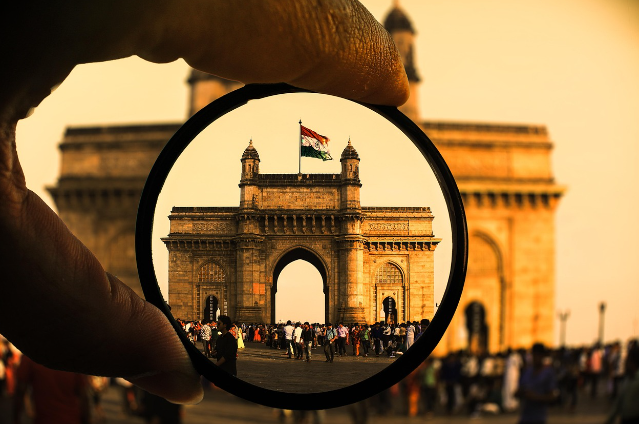
"A nation’s true strength is not in its wealth, but in its will to rise after every fall."
India recently celebrated its seventy-ninth Independence Day. This occasion is always a reminder of how far the nation has come and how much has changed since the time before freedom. Before independence, India was under colonial rule, and life was very hard for most people. Poverty, hunger, and lack of resources were common, and Indians had little control over governance, economy, or development. The country was treated largely as a supplier of raw materials and cheap labor. Education was limited, healthcare was poor, and infrastructure was basic, with weak roads, no proper electricity, and very few industries.
But after independence, things began to change. Guided by visionary leaders who believed in self-reliance and growth, India started building its own path. One of the earliest milestones was the creation of a strong Constitution that gave equal rights to all citizens and laid the foundation for democracy. Land reforms and agricultural efforts followed, leading eventually to the Green Revolution, which transformed India into a self-sufficient nation in food production. At the same time, education was expanded with new schools, universities, and research centers. Industrial growth in steel, energy, and transport began to reduce dependence on imports, while healthcare slowly improved through hospitals, medical colleges, and technology.
Over the decades, India entered the fields of space and science, showcasing its ability to stand among world powers. The IT sector and services industry created a global image of India as a hub of innovation and skill. Cities expanded, infrastructure grew, and millions of young people found opportunities to build better lives. Though challenges like poverty, unemployment, inequality, and corruption still remain, the progress made in seventy-nine years is remarkable. From a dependent and struggling nation, India has grown into one of the world’s fastest developing economies, with advancements in education, healthcare, digital technology, and global influence.
India Before Independence
Before independence, India was a land of pain and struggle. People had little control over their own lives, as the country was under British rule. Resources were exploited for the rulers’ benefit, while the people were left in poverty and hunger. Once known for its rich trade and culture, India became a land of suffering as industries like textiles were destroyed to promote British goods. Farmers were forced to grow cash crops like indigo and cotton instead of food, leading to devastating famines.
Education was limited to a small section of society, healthcare was almost absent, and infrastructure existed only to serve colonial interests. Social divisions of caste, class, and religion were exploited to weaken unity. Politically, Indians had no real voice, and whenever they demanded freedom, they were met with harsh repression. Yet, these struggles gave rise to movements led by Mahatma Gandhi, Jawaharlal Nehru, Subhas Chandra Bose, and many others who inspired people to unite under the dream of a free nation. Though conditions were grim, they created a spirit of resistance and hope that eventually brought independence after years of sacrifice.
Independence of India
The years immediately after independence were filled with both hope and hardship. Partition left millions displaced and grieving. India’s economy was weak, industries were small, and agriculture depended on monsoons. Yet, leaders like Jawaharlal Nehru set the foundation for growth by building industries, dams, and educational institutions like the IITs. The Constitution granted every citizen equal rights and the power to vote, a revolutionary step for a newly free nation.
Despite challenges like food shortages, wars, and lack of technology, India moved forward. The Green Revolution strengthened agriculture, railways and roads expanded, and communication improved. Poverty and inequality persisted, but the unity of a diverse land gave India strength to survive and grow as a democracy. These early years shaped India’s courage and vision to dream of becoming a developed country one day.
India from Independence to Now
From 1947 to 2025, India’s journey has been one of struggle, progress, and transformation. At independence, India was poor and broken, with very little industry and most people dependent on farming. But step by step, the nation began to grow. The 1950s and 1960s focused on building industries and schools. The Green Revolution of the 1960s secured food supply. The 1970s and 1980s saw wars, corruption, and poverty, but also achievements in science and space.
In 1991, economic liberalization opened India to globalization. Foreign companies entered, jobs increased, and technology spread rapidly, giving India a new identity. By the 2000s, India became known worldwide for its IT sector, with cities like Bangalore and Hyderabad becoming technology hubs. Internet and mobile phones transformed everyday life, reaching even rural areas.
From 2010 onwards, India accelerated into the digital age with highways, metros, airports, startups, and digital payments. By 2025, India is one of the fastest-growing economies, recognized for achievements in space research, technology, cinema, and culture. Though challenges such as poverty, unemployment, pollution, and inequality remain, India has transformed from a dependent colony into a confident, global power. Today, Indians enjoy better education, healthcare, opportunities, and dreams for the future.
“India’s journey from 1947 to 2025 is not just about growth in numbers but about the spirit of its people, who turned struggle into strength and dreams into reality. While challenges remain, the story of India is proof that no power can stop a country that chooses to move forward with hope, courage, and unity.”
